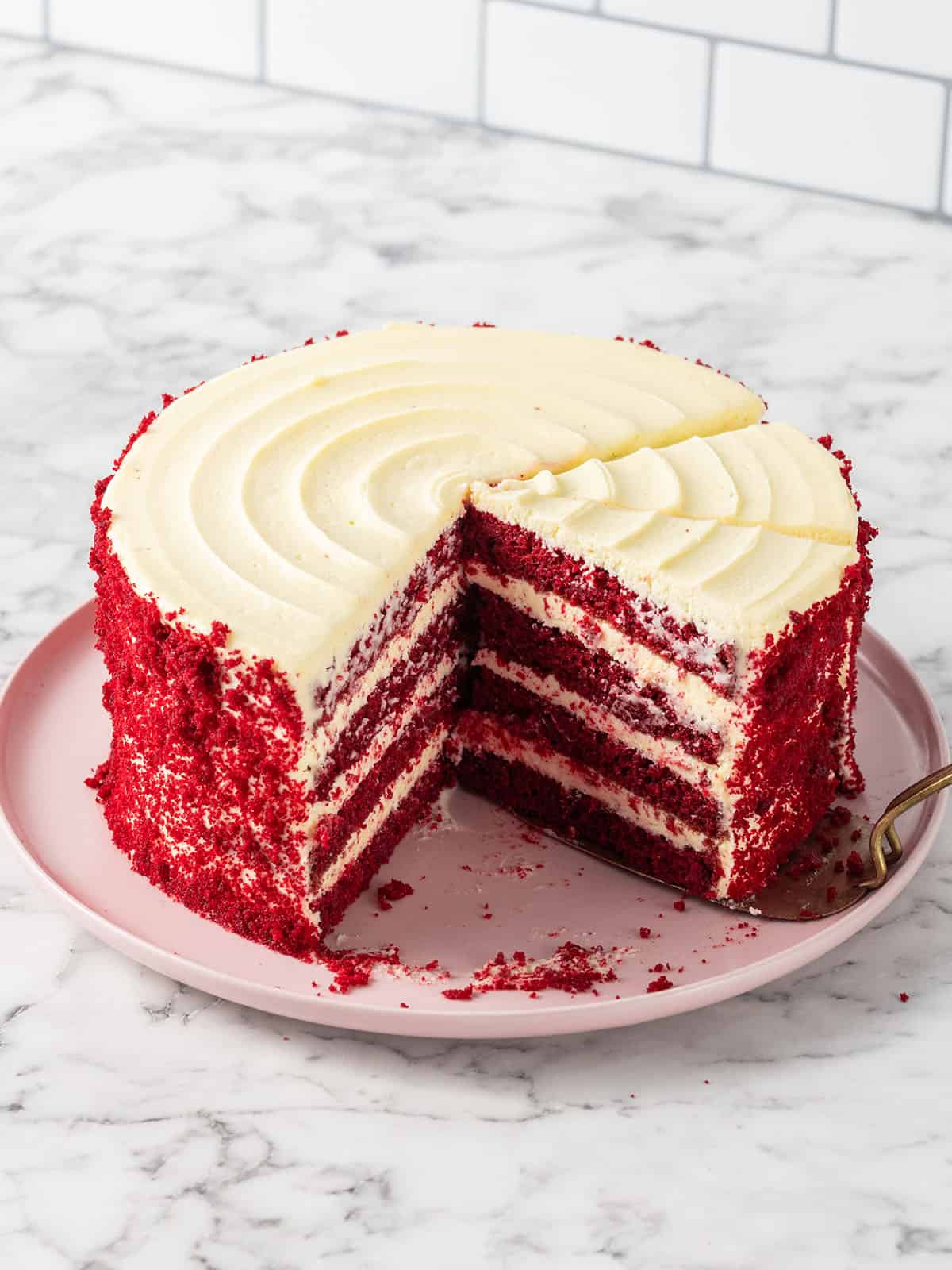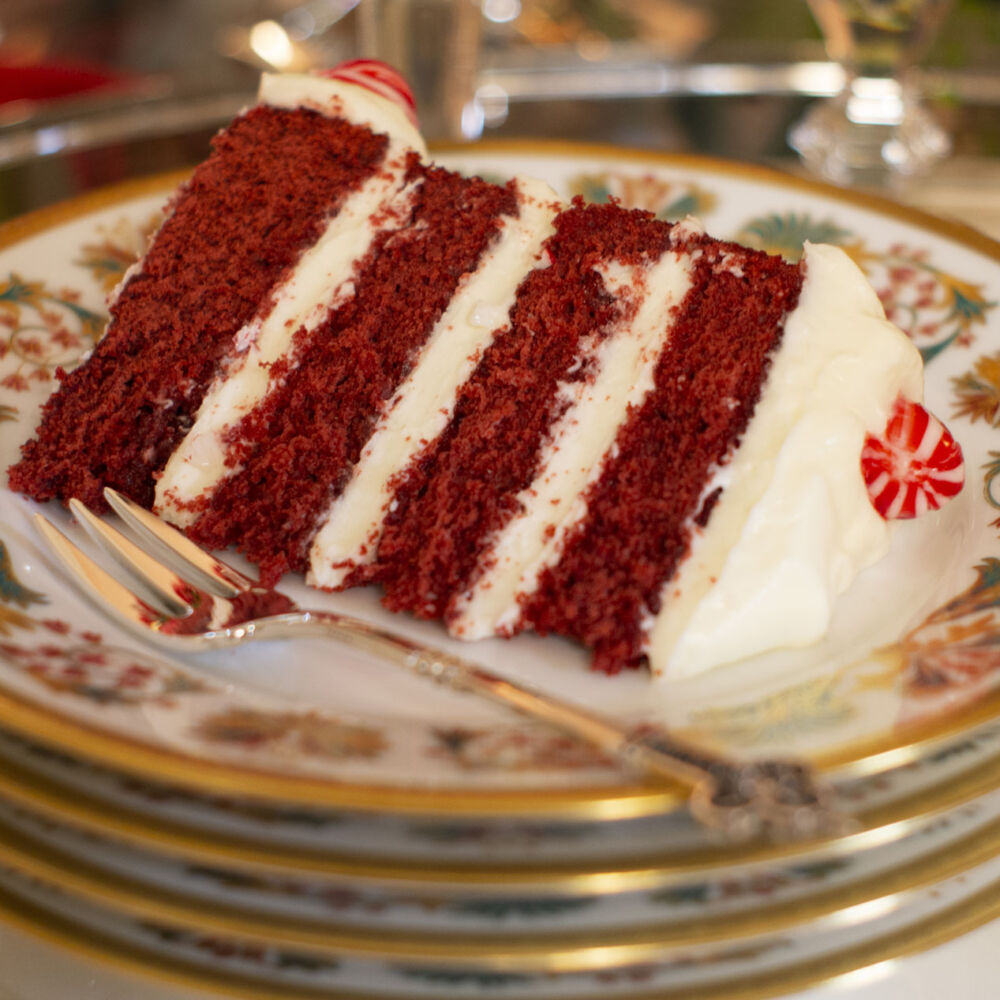Introduction
Red velvet cake, with its striking crimson hue and velvety texture, has captured the hearts and taste buds of dessert lovers around the world. In this article, we'll explore the fascinating history, the secrets behind its vibrant color, and the art of crafting the perfect red velvet cake. So, grab a slice, and let's delve into the decadent world of red velvet indulgence.
Unveiling the Origins: A Journey Through Red Velvet History
1. Introduction to Red Velvet Cake:
- An overview of red velvet cake as a beloved dessert known for its unique flavor and vibrant color.
2. Historical Roots:
- Delving into the origins of red velvet cake, tracing its roots back to the early 20th century and its rise to popularity in the United States.
3. Cultural Significance:
- Exploring the cultural significance of red velvet cake, from its association with Southern cuisine to its iconic status in modern baking.
The Secret Ingredient: Unraveling the Mystery Behind Red Velvet's Color
1. Cocoa Powder:
- Discovering how cocoa powder contributes to the distinctive color and flavor profile of red velvet cake.
2. Acidic Reaction:
- Understanding the chemical reaction between acidic ingredients like buttermilk and vinegar and the cocoa powder, resulting in the vibrant red hue.
3. Natural and Artificial Colorings:
- Exploring the use of natural ingredients like beetroot and food coloring to enhance the red color of red velvet cake.
Mastering the Art: Tips for Baking the Perfect Red Velvet Cake
1. Ingredient Selection:
- Choosing high-quality ingredients, including cake flour, buttermilk, and pure vanilla extract, for optimal flavor and texture.
2. Mixing Technique:
- Mastering the proper mixing technique to achieve a light and fluffy cake batter, ensuring a tender crumb.
3. Baking Temperature and Time:
- Understanding the importance of baking red velvet cake at the correct temperature and duration to prevent dryness and maintain moisture.
Elevating Your Creation: Creative Red Velvet Cake Variations
1. Red Velvet Cupcakes:
- Adapting the classic red velvet cake recipe into bite-sized cupcakes, perfect for parties and special occasions.
2. Red Velvet Cheesecake:
- Combining the rich flavors of red velvet cake with creamy cheesecake for a decadent dessert mashup.
3. Red Velvet Whoopie Pies:
- Creating sandwich cookies with red velvet cake layers and a luscious cream cheese filling for a handheld treat.
Conclusion: Indulge in Red Velvet Bliss
In conclusion, red velvet cake is more than just a dessert; it's a symbol of indulgence, elegance, and timeless allure. By understanding its history, unraveling the secrets behind its color, and mastering the art of baking, you can create your own masterpiece that delights the senses and captivates the palate. So, whether you're celebrating a special occasion or simply craving a sweet treat, embrace the decadent delight of red velvet cake and savor every blissful bite.
FAQs: Answering Your Burning Questions
1. Can I make red velvet cake without food coloring?
Yes, you can omit food coloring from red velvet cake recipes and rely on the natural color of cocoa powder for a less vibrant but still delicious cake.
2. What can I use instead of buttermilk in red velvet cake?
You can substitute buttermilk with a mixture of milk and vinegar or lemon juice to achieve a similar acidic reaction needed for the cake's texture and flavor.
3. How do I store red velvet cake?
Store red velvet cake in an airtight container at room temperature for up to three days, or in the refrigerator for up to a week. Bring to room temperature before serving for the best texture and flavor.
4. Can I freeze red velvet cake?
Yes, you can freeze red velvet cake layers or cupcakes for up to three months. Wrap them tightly in plastic wrap and aluminum foil before freezing, then thaw in the refrigerator before serving.
5. Can I use natural food coloring instead of artificial food coloring?
Yes, you can use natural food coloring options like beetroot powder or raspberry puree to achieve a red hue in red velvet cake. Adjust the quantity to achieve the desired color intensity.



